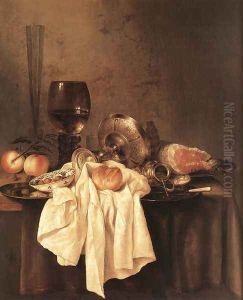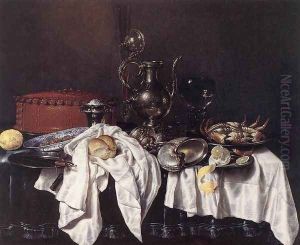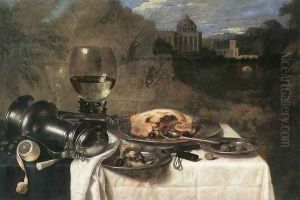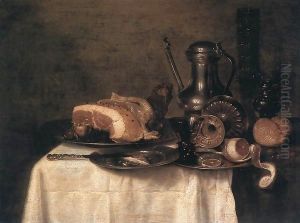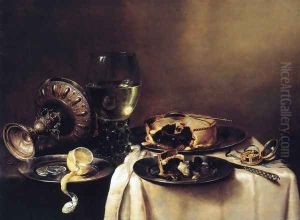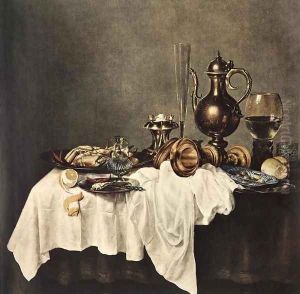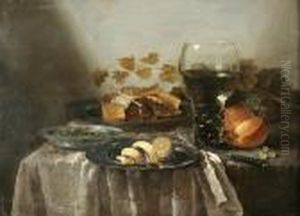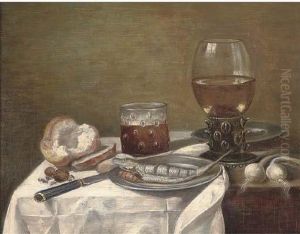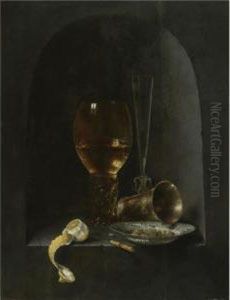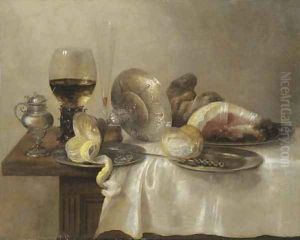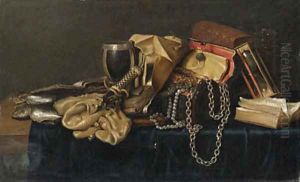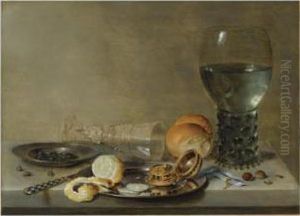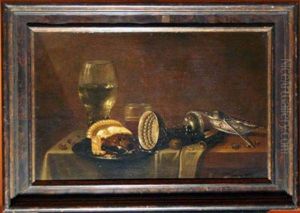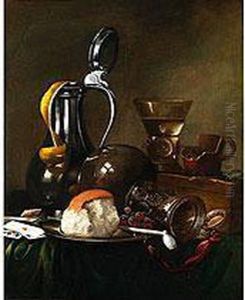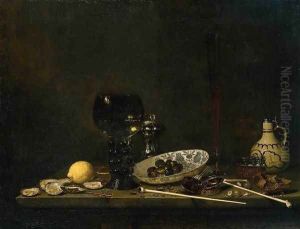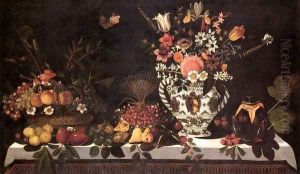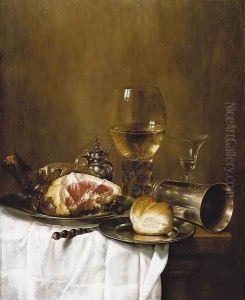





Still-Life 1651
-
About Reproduction
Discover the allure of art with our faithful reproduction of "Still-Life 1651", originally brought to life by the talented Willem Claesz. Heda. Unlike posters or prints, our hand-painted oil painting breathes an unique sense of depth and texture into your space. Every detail, every stroke, and every texture is meticulously recreated, paying the perfect homage to Willem Claesz. Heda and his artistic vision.
Owning this piece is more than just decoration - it's a statement of your refined taste in art. Let the vibrant colors and intricate details of this replica serve as a daily reminder of the beauty in our world. Elevate your decor and appreciate the richness of art with our replica of this masterpiece.
-
Painting Description
"Still-Life 1651" by Willem Claesz. Heda is a quintessential example of Dutch Golden Age still-life painting, showcasing the artist's mastery in capturing the texture, light, and composition of a seemingly simple table setting. Born in 1594 in Haarlem, Netherlands, Heda became renowned for his still-life works, particularly those that fall into the category of 'ontbijtjes' or breakfast pieces, which often depicted the remains of a meal with an array of objects. This painting, created in 1651, is a testament to Heda's skill in rendering materials such as metal, glass, and the translucence of liquids with meticulous detail and realism.
The artwork features a carefully arranged composition of a partially peeled lemon, a roemer (a type of wine glass), a pewter plate, and other objects that suggest the remnants of a sumptuous meal. The play of light and shadow, along with the subtle color palette, emphasizes the textures and forms of the objects, creating a harmonious and balanced composition. Heda's use of chiaroscuro, a technique that employs strong contrasts between light and dark, adds depth and volume to the objects, making them appear almost tangible.
"Still-Life 1651" is not only a display of technical skill but also serves as a reflection of the cultural and social aspects of 17th-century Dutch society. The inclusion of luxury items and exotic foods in still-life paintings of this period often symbolized wealth, trade, and the prosperity of the Dutch Republic during its Golden Age. Moreover, these works sometimes contained moral or vanitas themes, reminding viewers of the transience of life and the futility of earthly pleasures.
Today, "Still-Life 1651" by Willem Claesz. Heda is celebrated for its aesthetic beauty and historical significance, offering insight into the Dutch Golden Age's artistic achievements and the era's cultural values. The painting is a highlight of Heda's oeuvre, demonstrating his unparalleled ability to transform everyday objects into a composition of enduring beauty and meaning.
-
Lead Time & Shipping
When you order this oil painting replica, it typically takes 2-3 weeks to paint. If the artwork is more complex, it might need a little more time to ensure the best quality. Once it's ready, we'll send you a photo for your approval. After you give the green light, we'll ship it to you for free.
-
Return & Refund
We believe in the quality of our hand-painted oil painting reproductions, and your satisfaction is our priority. If for any reason, you are not completely satisfied with your purchase, we offer a 45-day return policy. You can return your artwork within 45 days of receipt and receive a full refund. Please note that the artwork must be returned in the original packaging and in the same condition as it was received.





